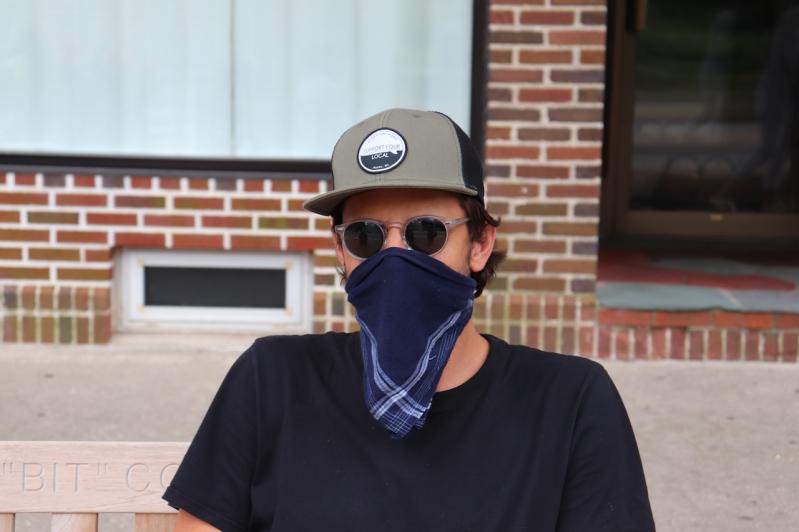For many of us, wearing a mask when we plan on interacting with anyone outside of our household has become almost routine by this point in the pandemic, although I don't know many people who do so happily. Despite the frustrating nature of wearing a mask, however, multiple studies have shown over the past year that doing so can significantly decrease the transmission of the novel coronavirus SARS-CoV-2 by more than 70 percent, according to an article in the Journal of the American Medical Association by Dr. John Brooks and Dr. Jay Butler.
Like anything routine, it can be easy to fall prey to complacency, which is why taking a few moments now and then to review your own mask-wearing practices is probably a good idea. Along with social distancing and good hand hygiene, mask wearing remains an integral component of our efforts to control the Covid-19 pandemic. And with new variants seemingly arising every day, wearing a mask -- and doing so properly -- remains one of the single most important actions we can individually take to turn the tide.
First and foremost, be sure to wear a mask whenever you plan on interacting or have the potential to interact with anybody whom you do not live with. Even if it's co-workers or fellow students with whom you spend a good portion of each day, you still need to wear a mask when you are around them as they (and you) inevitably interact with other people and groups throughout the day, and each unmasked interaction is an opportunity for the virus to spread. Whether you are inside or outside, around a close friend or not, you should be wearing a mask.
Next, check to see that your mask offers the best protection possible.
There are a great many types of masks out there ranging from disposable surgical or procedural masks such as those worn in operating rooms or hospitals to cloth ones made at home all the way to KN95 masks.
So, which should you pick to stay safe?
All masks will reduce the risk of transmission to some degree, particularly when both you and the person you are interacting with are wearing one. A study in the Journal of the American Medical Association by Phillip Clapp and colleagues that was published in December 2020 examined the efficacy of cloth masks and modified procedural masks in preventing transmission and found that filtration efficiency ranged from 26.5 to 80.2 percent. On the least effective end were the cotton masks and procedure masks with simple ear loops. Their effectiveness averaged in the upper 20 to upper 30 percent. At the higher end of protection were two-layer nylon masks with nose bridges and filter inserts, which offered filtration effectiveness somewhere in the 70 percent range.
What does this mean for day-to-day use? If you do wear a simple disposable mask, strongly consider covering it with a cloth mask for better protection, as recommended by the Centers for Disease Control and Prevention and illustrated online at http://bit.ly/3aMIc79. Similarly, you can use two layered cloth masks, that allow for filter inserts, but be sure if you choose to double-mask that you can breathe easily the whole time. Don't pick a mask that has a valve; those masks may protect you, but if you have the virus and are asymptomatic, they will still allow any virus you may be carrying to escape easily. If you choose to wear a gaiter or neck cover, fold it over to create a double layer if possible.
Lastly, KN95 masks can offer a high level of protection in terms of filtration effectiveness -- likely somewhere at least in the 80 percent range -- but the C.D.C. warns that a significant number of KN95 masks available on the market are counterfeit. Before buying these, take a look at the C.D.C.'s website at http://bit.ly/3byiMJF for how to check for authenticity.
In the end, all of these different types of masks are only as good as your technique for and dedication to wearing them. Pick a mask that has a good fit around your face. If picking a disposable or procedural mask, choose one that has some sort of nose wire so that you can get as tight a seal as possible around your nose and upper face. Try to minimize gaps where air can escape easily, and once you have put your mask on, don't touch it until it is time to take it off. Wash your cloth masks regularly with the rest of your laundry to keep them sanitary.
As irritating as it can be to have to run back to the house to grab a mask because you forgot one on your way to the grocery store, it doesn't come close to the discomfort of lying in a hospital bed with Covid-19 or of knowing that your choice to not wear a mask led to someone else ending up in an I.C.U.
In a year in which so much has been asked of us, this is a small sacrifice to keep yourself and your loved ones safe.

